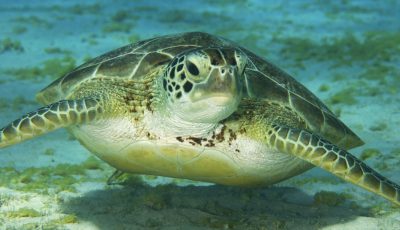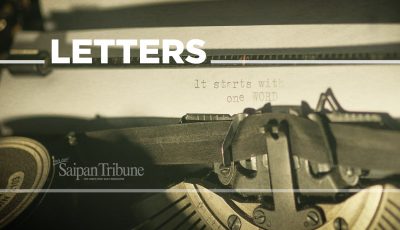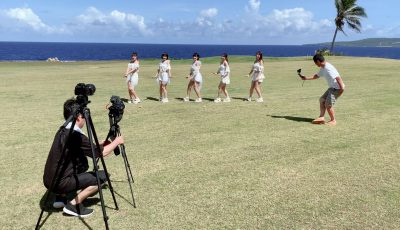Army and Marine Corps service: A legacy that now spans multiple generations of Chamorros from the Marianas
Thousands of our people died from being caught in the middle of World War II as the Americans and Japanese engaged in fierce fighting throughout the Marianas. Some of our immediate relatives, including my uncle, was a combat guide, leading search and capture missions during 1944, looking for Japanese military personnel hiding in the jungles of Guam.
The enduring presence of the Army and Marine Corps over the decades has prompted and enticed many generations of Chamorros to serve in these organizations. Our people have made and continue to leave an indelible impact on the broader Army and Marine Corps communities, spanning from the Korean conflict to the Vietnam conflict and beyond. Active-duty personnel and Army and Marine Corps veterans understand this intimately.
Our Mariana Islands chain and broader western Pacific region have evolved to become one of the most important regions to the United States national security community, not just for the Navy or Air Force, but equally for the Army and the Marines, America’s major land-based combat organizations. This has taken place without the full consent and approval of our Chamorro people.
Military land forces stationed in the Pacific and Asiatic areas are necessary now and in the future
Army and Marine Corps units are distributed throughout our region because they are responsible for working with key partner nations and communities. Soldiers and Marines are needed to deter hot war, secure shorelines, manage information, and fight from the sea on ships. Work undertaken by the Americans, including the Army and Marine Corps, focuses on building multinational military operations training, using technology to further strengthen partnerships, and being ready to fight when localized contingencies happen.
Close to 200,000 American military personnel are currently in our Pacific Asiatic region, west of the international date line.
Members of the Army and Marine Corps provide readily recognizable representations of American might, national will, and commitment in support of broad American and ally interests in our backyard. We should also remember that America, as the key superpower in the area, cannot underwrite area security by itself because the overall effort is too expensive and daunting. The American public will not allow the United States to go at it alone.
The Philippines, as just one example, has publicly signaled that it plans to deepen its ties with China’s militarily once President-elect Ferdinand Marcos Jr. is sworn into office. Should this take place, our entire island chain will become even more important from the American national security viewpoint because of our proximity to China and East Asia.
Guam and the Northern Marianas fall outside of this nation state ally foreign affairs paradigm because our island chain is an American bastion of militarized colonial status. This political architecture is grossly antiquated and need to change to reflect authentic participatory American democratic practices.
Some points to remember about the Army and Marine Corps
Ground-based war operations in landlocked Iraq and Afghanistan have consumed our consciousness over the past 20 years. Things are now changing. American military forces have been making major efforts to reposition and strengthen themselves throughout our Deep Pacific Blue Ocean continent.
The Army and Marines, in particular, want to remain most relevant in our Pacific region as China grows its national power. The Air Force and Navy have an easier time selling their relevance to the American public when it comes to fighting and protecting expansive American interests found throughout the Blue Ocean continent. The Army and Marine Corps are perceived to have a more difficult time doing this for a variety of reasons.
The significance of our Marianas Islands
chain cannot and must not be underappreciated by and from the American national and international security perch
Guam alone will house 10% of the total Marine Corps personnel count stationed west of the international date line in the Pacific. This percentage doesn’t include head counts when preparations for actual wartime scenario force structure inflows of people are required.
Tinian and Pagan will become key operational hubs for testing out new Army and Marine Corps concepts of operations for future wars. This will place substantial stress on Tinian and Pagan natural resource corridors, which will stress Chamorro cultural resource corridors. Saipan will become a central location toward ensuring that American military will is carried out and prevails.
Guam is home to roughly 8% of the total American Army military personnel force structure count located west of the international date line. Guam is a key area to prepare, support, receive, stage, and deploy soldiers for war. Guam personnel work with major Army units based out of Hawaii, Japan, South Korea, Alaska, Washington state, and elsewhere.
Both the Army and Marines are looking for ways to continually improve upon their logistical prowess for future tactical operations using our Mariana Islands as the principal shore base constellation. For better or worse, our Mariana Islands will receive and see some of the best weapons and personnel that America can produce, but as most of us are aware, many key quality-of-life elements will be compromised for our Chamorro people and our total environment.
Key takeaways
The Pacific Asiatic space has been and continues to remain under the broad American security military and intelligence umbrella. This has been the case for over seven decades.
America is the world’s most lethal superpower and has unilaterally determined that our Pacific Asiatic region is the most important strategic part of the world. Our ancient Chamorro Pacific Islander civilization is located smack in the middle of this superpower interpretation.
As a result, the need to train, equip and prepare soldiers and Marines for war sponsored by the United States is needed.
We cannot leave the Chinese, North Korean, and Russian militaries free to do as they choose because our Mariana Islands are long-held bastions of American control and military influence. It is a fact that our island chain runs the risk of being attacked by a foreign power.
This is both a dangerous and very real proposition for our ancient Chamorro people and for all American military resources currently placed throughout our beautiful island chain named after Queen Mariana.



























